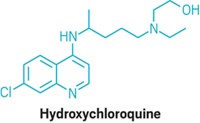Advertisement
Grab your lab coat. Let's get started
Welcome!
Welcome!
Create an account below to get 6 C&EN articles per month, receive newsletters and more - all free.
It seems this is your first time logging in online. Please enter the following information to continue.
As an ACS member you automatically get access to this site. All we need is few more details to create your reading experience.
Not you? Sign in with a different account.
Not you? Sign in with a different account.
ERROR 1
ERROR 1
ERROR 2
ERROR 2
ERROR 2
ERROR 2
ERROR 2
Password and Confirm password must match.
If you have an ACS member number, please enter it here so we can link this account to your membership. (optional)
ERROR 2
ACS values your privacy. By submitting your information, you are gaining access to C&EN and subscribing to our weekly newsletter. We use the information you provide to make your reading experience better, and we will never sell your data to third party members.
Biological Chemistry
Getting Stressed Out To Give Birth
Biochemistry: The stress hormone cortisol acting on a transcription protein plays a role in inducing labor
by Judith Lavelle
November 2, 2015
| A version of this story appeared in
Volume 93, Issue 43
Obstetricians know that high levels of cortisol—the so-called stress hormone—play a role in inducing labor. But mysteries behind that mechanism have so far impeded efforts to help time labor for healthier outcomes for moms and infants. Researchers have now discovered that a protein—signal transducer and activator of transcription 3 (STAT3)—plays a previously unrecognized role in inducing labor with the help of cortisol (Sci. Signaling 2015, DOI: 10.1126/scisignal.aac6151). The research team, led by Kang Sun of Shanghai Jiao Tong University, looked into STAT3 because it encourages expression of a gene called PTGS2 in other tissues. In fetal membrane tissues, this gene codes for an enzyme that produces prostaglandins, which in turn cause changes in nearby smooth muscles that help expel the fetus. By analyzing amniotic tissue, the researchers found that high levels of cortisol correspond to phosphorylated STAT3 rather than normal STAT3. They deduced that cortisol sets off a chain of biochemical events that modify STAT3, allowing it to act on PTGS2 and help induce labor. “Intervention of the signaling pathway,” Sun says, may lead to “very specific therapeutic methods to stop preterm labor.”





Join the conversation
Contact the reporter
Submit a Letter to the Editor for publication
Engage with us on Twitter